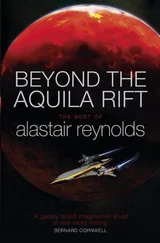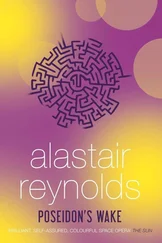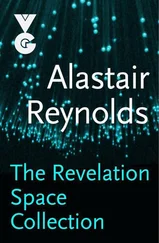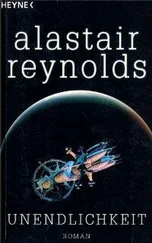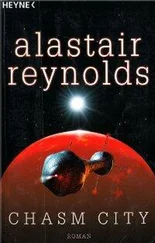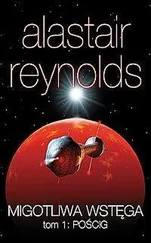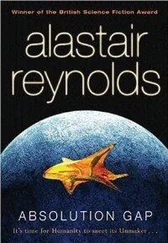“I think I’ve reduced the amount of blood in my caffeine system to an acceptable level, if that’s what you mean.”
“Then let us discuss matters of a terminal nature, at least where Taraschi is concerned.”
Ng began to hit her with the final details for the kill. Most of it was already in the plan, or stuff that she had guessed for herself, based on her experience of previous kills. Taraschi was to be her fifth consecutive assassination, so she was beginning to grasp the wider scope of the game. Though they were not always obvious, the game had its own rules, subtly reiterated in the grand movements of each kill. The media attention was even picking up, her name being bandied around Shadowplay circles with increasing frequency, and Case was apparently setting up some juicy, high-profile targets for her next few hunts. She was, she felt, on the way to becoming one of the top hundred or so assassins on the planet; elite company indeed.
“Right,” she said. “Under the Monument, plaza level eight, west annex, one hour. Couldn’t be easier.”
“Aren’t you forgetting one thing?”
“Right. Where’s the kill weapon, Case?”
Ng’s form nodded behind her. “Where the tooth fairy left it, dear girl.”
And then he turned his box and retreated from the room, leaving only a faint whiff of lubricant. Khouri, frowning, reached a hand slowly beneath the pillow on her bed. There was something, just as Case had said. There had been nothing there when she went to sleep, but this sort of thing hardly bothered her these days. The company always had moved in mysterious ways.
Soon, she was ready.
She called a cable-car from the roof, the kill weapon snuggling under her coat. The car detected the weapon and the presence of implants in her head, and would have refused to carry her had she not shown it her Omega Point ident, grafted beneath the nail of her right index finger, making a tiny holographic target symbol seem to dance beneath the keratin. “Monument to the Eighty,” Khouri said. Sylveste stepped off the ladder and walked across the stepped base of the pit until he reached the pool of light around the obelisk’s exposed tip. Sluka and one of the other archaeologists had deserted him, but the one remaining worker—assisted by the servitor—had managed to uncover nearly a metre of the object, peeling away the nested layers of the stone sarcophagi to reach the massive block of obsidian, skilfully carved, on which Amarantin graphicforms had been engraved in precise lines. Most of it was textual: rows of ideopicts. The archaeologists understood the basics of Amarantin language, though there had been no Rosetta stone to aid them. The Amarantin were the eighth dead alien culture discovered by humanity within fifty light years of Earth, but there was no evidence that any of those eight species had come into contact with each other. Nor could the Pattern Jugglers or the Shrouders offer assistance: neither had revealed anything remotely resembling a written language. Sylveste, who had come into contact with both the Jugglers and the Shrouders—or at least the latter’s technology—appreciated that as well as anyone.
Instead, computers had cracked the Amarantin language. It had taken thirty years—correlating millions of artefacts—but finally a consistent model had been evolved which could determine the broad meaning of most inscriptions. It helped that, at least towards the end of their reign, there had only been one Amarantin tongue, and that it had changed very slowly, so that the same model could interpret inscriptions which had been made tens of thousands of years apart. Of course, nuances of meaning were another thing entirely. That was where human intuition—and theory—came in.
Amarantin writing was not, however, like anything in human experience. All Amarantin texts were stereoscopic—consisting of interlaced lines which had to be merged in the reader’s visual cortex. Their ancestors had once been something like birds—flying dinosaurs, but with the intelligence of lemurs. At some point in their past their eyes had been situated on opposite sides of their skulls, leading to a highly bicameral mind, each hemisphere synthesising its own mental model of the world. Later, they had become hunters and evolved binocular vision, but their mental wiring still owed something to that earlier phase of development. Most Amarantin artefacts mirrored their mental duality, with a pronounced symmetry about the vertical axis.
The obelisk was no exception.
Sylveste had no need for the special goggles his co-workers needed to read Amarantin graphicforms: the stereoscopic merging was easily accommodated within his own eyes, employing one of Calvin’s more useful algorithms. But the act of reading was still tortuous, requiring strenuous concentration.
“Give me some light here,” he said, and the student unclipped one of the portable floods and held it by hand over the side of the obelisk. From somewhere above lightning strobed: electricity coursing between dust planes in the storm.
“Can you read it, sir?”
“I’m trying,” Sylveste said. “It isn’t the easiest thing in the world, you know. Especially if you don’t keep that light steady.”
“Sorry sir. Doing my best. But it is getting windy here.”
He was right: vortices were forming, even in the pit. It would soon get very much windier, and then the dust would begin to thicken, until it formed sheets of grey opacity in the air. They would not be able to work for very long in those conditions.
“I apologise,” Sylveste said. “I appreciate your help.” Feeling that something more was called for, he added: “And I’m grateful that you chose to stay with me, rather than Sluka.”
“It wasn’t difficult, sir. Not all of us are ready to dismiss your ideas.”
Sylveste looked up from the obelisk. “All of them?”
“We at least accept they should be investigated. After all, it’s in the colony’s best interests to understand what happened.”
“The Event, you mean?”
The student nodded. “If it really was something the Amarantin caused to happen… and if it really did coincide with them achieving spaceflight—then it might be of more than academic interest.”
“I despise that phrase. Academic interest—as if any other kind were automatically more worthy. But you’re right. We have to know.”
Pascale came closer. “Know what, exactly?”
“What it was they did that made their sun kill them.” Sylveste turned to face her, pinning her down with the oversized silvery facets of his artificial eyes. “So that we don’t end up making the same mistake.”
“You mean it was an accident?”
“I very much doubt that they did it deliberately, Pascale.”
“I realise that.” He had condescended to her, and she hated that, he knew. He also hated himself for doing it. “I also know that stone-age aliens just don’t have the means to influence the behaviour of their star, accidentally or otherwise.”
“We know they were more advanced than that,” Sylveste said. “We know they had the wheel and gunpowder; a rudimentary science of optics and an interest in astronomy for agrarian purposes. Humanity went from that level to spaceflight in no more than five centuries. It would be prejudiced to assume another species was not capable of the same, wouldn’t it?”
“But where’s the evidence?” Pascale stood to shake rivulets of settled dust from her greatcoat. “Oh, I know what you’re going to say—none of the high-tech artefacts survived, because they were intrinsically less durable than earlier ones. But even if there was evidence—how does that change things? Even the Conjoiners don’t go around tinkering with stars, and they’re a lot more advanced than the rest of humanity, us included.”
Читать дальше

